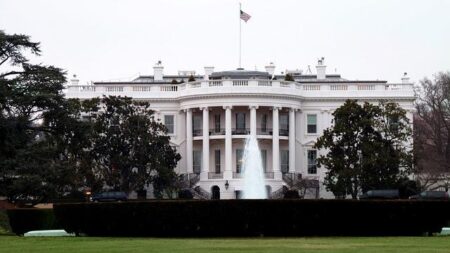In a groundbreaking decision that could reshape the landscape of competitive sports and gender rights, the recent Cooper v. USA Powerlifting ruling has captured national attention. This landmark case, centering on issues of gender identity and fairness in athletic competition, marks a significant victory for advocates of gender justice. As the court’s verdict reverberates across sports organizations and legal circles alike, here are three key things you need to know about the implications and impact of this pivotal win.
Cooper v USA Powerlifting Victory Sets New Legal Precedent for Transgender Athletes
In a groundbreaking decision, Cooper’s victory against USA Powerlifting marks a significant milestone in the fight for transgender inclusion in sports. The ruling affirms that anti-transgender policies in athletic organizations may violate federal civil rights laws, setting a powerful precedent for similar cases nationwide. For the first time, a court has explicitly recognized that blanket bans on transgender athletes deny them equal opportunities based on legally protected gender identity, compelling sports bodies to reevaluate and amend exclusionary rules.
The ramifications of this case extend beyond the powerlifting arena, offering a framework for assessing fairness and inclusion across all competitive sports. Key takeaways include:
- Legal recognition of gender identity protections under Title IX and the Equal Protection Clause.
- Obligation for sporting organizations to develop evidence-based policies balancing fairness and inclusivity.
- Potential challenges for states attempting to bar transgender athletes, signaling a clash with federal anti-discrimination mandates.
| Aspect | Impact |
|---|---|
| Legal Precedent | Strengthens protections for transgender athletes |
| Sports Governance | Pushes for inclusive policy reforms |
| Social Influence | Raises awareness on gender justice in athletics |
Implications for Gender Equity in Competitive Sports Governance
The ruling in Cooper v. USA Powerlifting represents a pivotal shift in the governance frameworks of competitive sports, particularly concerning gender classifications and inclusivity. Traditionally, policies in competitive sports have been rigid, often excluding transgender athletes or forcing them into categories that do not align with their gender identity. This legal victory challenges those longstanding norms, urging sports organizations to reconsider their eligibility criteria under the lens of fairness and equal opportunity. It compels governing bodies to create regulations that respect both competitive integrity and the complex realities of gender diversity, promoting a more inclusive landscape for all athletes.
Beyond policy changes, the case signals broader societal implications for gender equity within sports leadership and decision-making roles. It encourages stakeholders to address systemic biases and work towards governance structures that are not only more representative but also better equipped to support marginalized groups. Key considerations emerging from this case include:
- Inclusive policy development: Crafting guidelines that acknowledge varied gender identities without compromising competition legitimacy.
- Transparent appeal mechanisms: Establishing fair processes for athletes challenging restrictive eligibility rules.
- Diverse leadership representation: Ensuring voices from gender-diverse backgrounds influence governance decisions.
| Aspect | Previous Approach | Post-Cooper Direction |
|---|---|---|
| Gender Classification | Binary, hormone-based thresholds | Flexible, identity-inclusive criteria |
| Policy Adaptation | Infrequent and rigid updates | Responsive, consultative processes |
| Athlete Rights | Limited protections for transgender athletes | Enhanced recognition and safeguards |
How the Ruling Challenges Existing Policies and Influences Future Legislation
The landmark decision in Cooper v. USA Powerlifting boldly confronts entrenched policies that have long dictated participation standards in athletic competitions. By recognizing the rights of transgender athletes to compete in accordance with their gender identity, the ruling effectively challenges the binary norms upheld by many sports federations and governing bodies. This pivotal judgment highlights the inherent contradictions in policies that exclude or marginalize transgender competitors, pushing organizations to reexamine eligibility criteria and consider more inclusive frameworks.
- Overrides blanket bans based on birth-assigned sex, emphasizing individual rights.
- Sets a legal precedent for courts to scrutinize discriminatory sporting policies.
- Encourages the development of scientifically informed guidelines that balance fairness with inclusivity.
Beyond immediate policy shifts, the ruling serves as a catalyst for legislative reform, signaling a new era in gender justice. Lawmakers are increasingly compelled to address the complexities of gender identity within athletic and broader societal contexts. As a result, we anticipate a wave of legislative initiatives aimed at harmonizing anti-discrimination statutes with evolving social understandings. This momentum is reflected in the growing number of jurisdictions introducing bills that explicitly protect transgender athletes, thereby embedding these principles more firmly in the legal landscape.
| Policy Area | Current Status | Potential Impact of Ruling |
|---|---|---|
| Sports Eligibility Rules | Predominantly exclusionary | Increased inclusivity & fair assessment |
| Anti-Discrimination Laws | Patchy and inconsistent | Strengthened legal protections for transgender athletes |
| Legislative Initiatives | Emerging and reactive | Proactive, rights-based policies anticipated |
Recommendations for Sports Organizations to Foster Inclusive and Fair Competition
To build an environment where all athletes can compete on a level playing field, sports organizations must implement policies grounded in fairness and inclusivity. This starts by adopting clear, evidence-based guidelines for eligibility that respect both gender identity and competitive integrity. Education programs targeting staff, coaches, and officials are crucial for fostering understanding and reducing bias. Moreover, institutions should establish independent review boards to annually assess the impact of these guidelines, ensuring they evolve alongside emerging scientific insights and community feedback.
Transparency and open communication form the backbone of these efforts, preventing misunderstandings and promoting trust among athletes and stakeholders. Regular forums should be held where athletes can voice concerns and propose improvements. Additionally, investing in research to develop nondiscriminatory assessment tools can help safeguard fairness without undermining inclusion. Below is a snapshot of best practices that organizations might consider:
| Best Practice | Key Benefit |
|---|---|
| Evidence-Based Eligibility Criteria | Balances inclusion with competitive equity |
| Education & Training Initiatives | Reduces bias & promotes empathy |
| Independent Review Panels | Ensures policy responsiveness & fairness |
| Open Athlete Feedback Channels | Encourages transparency & trust |
The Conclusion
The landmark Cooper v. USA Powerlifting decision marks a pivotal moment in the ongoing pursuit of gender justice in sports. By challenging long-standing norms and legal frameworks, the case sets important precedents that could reshape policies around transgender athlete participation nationwide. As this legal landscape continues to evolve, stakeholders across athletic and legal communities will be watching closely to see how this ruling influences future debates on fairness, inclusion, and equality in competitive sports.




